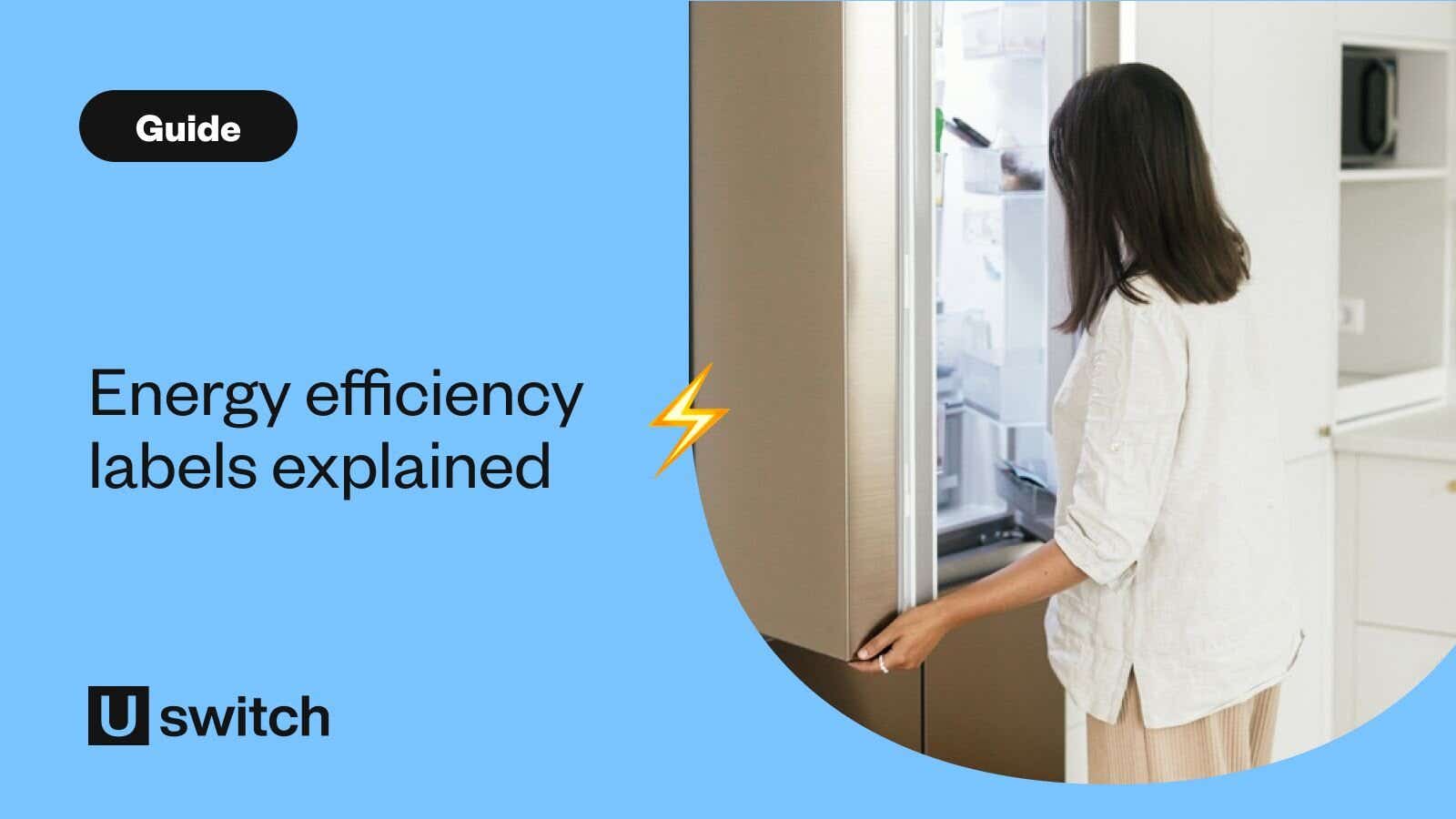Energy efficiency labels explained


What is an energy efficiency label?
An energy efficiency label is a grading system that shows you how much energy an appliance uses and how efficient it is. It was introduced by the EU in 1995 to provide customers with more information about the machines they were considering purchasing, and to stimulate competition and innovation between manufacturers.
The current energy rating scale runs from A (most efficient) to G (least efficient). It’s important to consider this when buying a new appliance as it will help you compare different models.
Appliances that have energy labels include:
- Washing machines, tumble dryers and washer-dryers
- Fridges and freezers
- Dishwashers
- Ovens
- TVs and electronic displays
- Light bulbs and LEDs
Read our guide to which appliances use the most energy.
How to read an appliance’s energy efficiency label
On the left-hand side of the label, you’ll see a scale with different colours ranging from dark green for A down to red for G. The black pointer symbol next to the scale tells you the rating of the appliance you’re looking at. Below the scale is the kWh rating, which lets you know the amount of energy the product uses. It could be per 100 cycles, per year or per 1,000 hours depending on the type of appliance.
Underneath the kWh rating is an area for “extra information”. Again, this will vary depending on the type of appliance.
Here is an example for a dishwasher. Labels for other appliances like freezers and washing machines vary slightly, but look more or less the same.

What was on the old energy labels?
You may remember products having ratings of A+, A++ and even A+++. This happened as appliances got more and more efficient, but it all became increasingly complicated for consumers. In March 2021, these extra ratings were scrapped and the system now runs from A to G, as it originally did.
How can I save energy on appliances?
There are a lot of ways you can save energy around the home beyond investing in energy-efficient appliances. For instance, you can:
- Air-dry your clothes instead of using the tumble dryers
- Prepare meals with a slow cooker or air fryer instead of an oven
- Wait until your dishwasher is full before running
- Use ‘eco’ programs on your appliances
- Switch energy supplier to find a cheaper tariff.
Take a look at our guide featuring over 100 energy-saving tips for the home for more ideas.